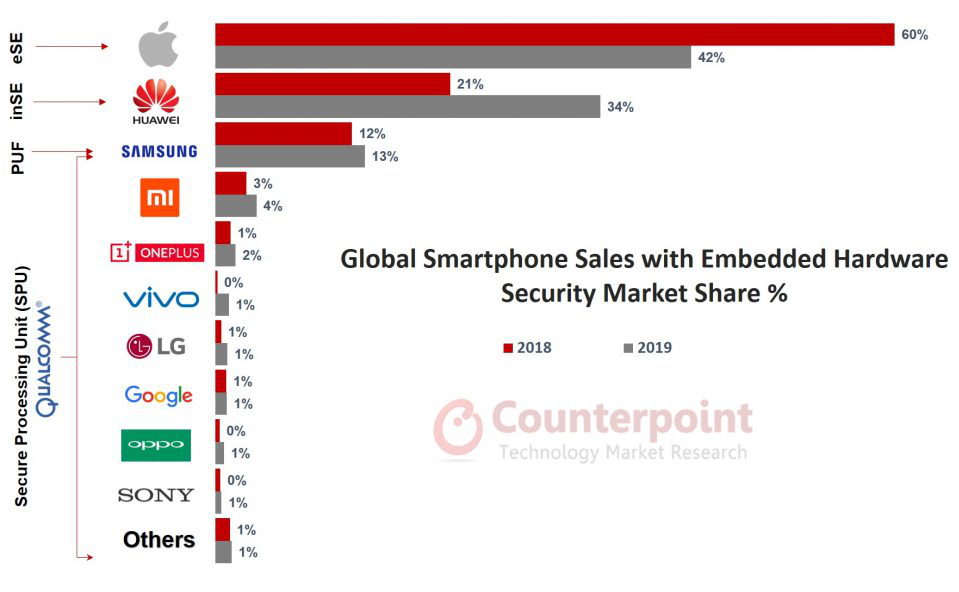
In recent times, we have seen a push towards smartphone manufacturers taking the security of their devices more seriously. According to a report, about one-third of global smartphones sold in 2019 had some level of embedded hardware security chips in them, with Apple continuing to be in the lead.

Evident from their marketing, the company that leads the market share of secure devices is Apple with a nearly 42% share in 2019. Since the iPhone 5s, Apple has been embedding a Secure Enclave (eSE) in their phones, ensuring data stays protected during a malware attack. They have lost some of this share, coming down from 60% in 2018, but that understandable as more devices show up with security chips in them.

Huawei saw its market share of phones with embedded hardware security chips from 21% in 2018 to 34% in 2019. They use integrated secure element (inSE) on its SoCs, which include their HiSilicon Kirin 960, 970, 980, 990 and 710. Other major manufacturers like Xiaomi, OnePlus, OPPO, Samsung and Google use Qualcomm’s Secure Processing Unit (SPU) in their devices. Samsung also implements their Physically Unclonable function (PUF), that serves as a unique identifier in the Exynos 9820 and 9825 SoCs.
Commenting on the report, Counterpoint Research Analyst, Satyajit Sinha said:
Smartphone users are increasingly storing personal and professional data including digital banking, payment and financial information on smartphones. This attracts cyber attacks with victims losing real assets, such as money, personal data and loss of privacy. Securing smartphones should be a high priority for the smartphone industry. Traditionally, mobile security was mostly about software applications, however, with the increased threats, there is a need to secure hardware at one end and data at the other. There is a rising need for end-to-end security. Secure chipsets like secure elements, PUFs, and TPMs embedded in the smartphone are currently the best solution to meet increased security needs.
